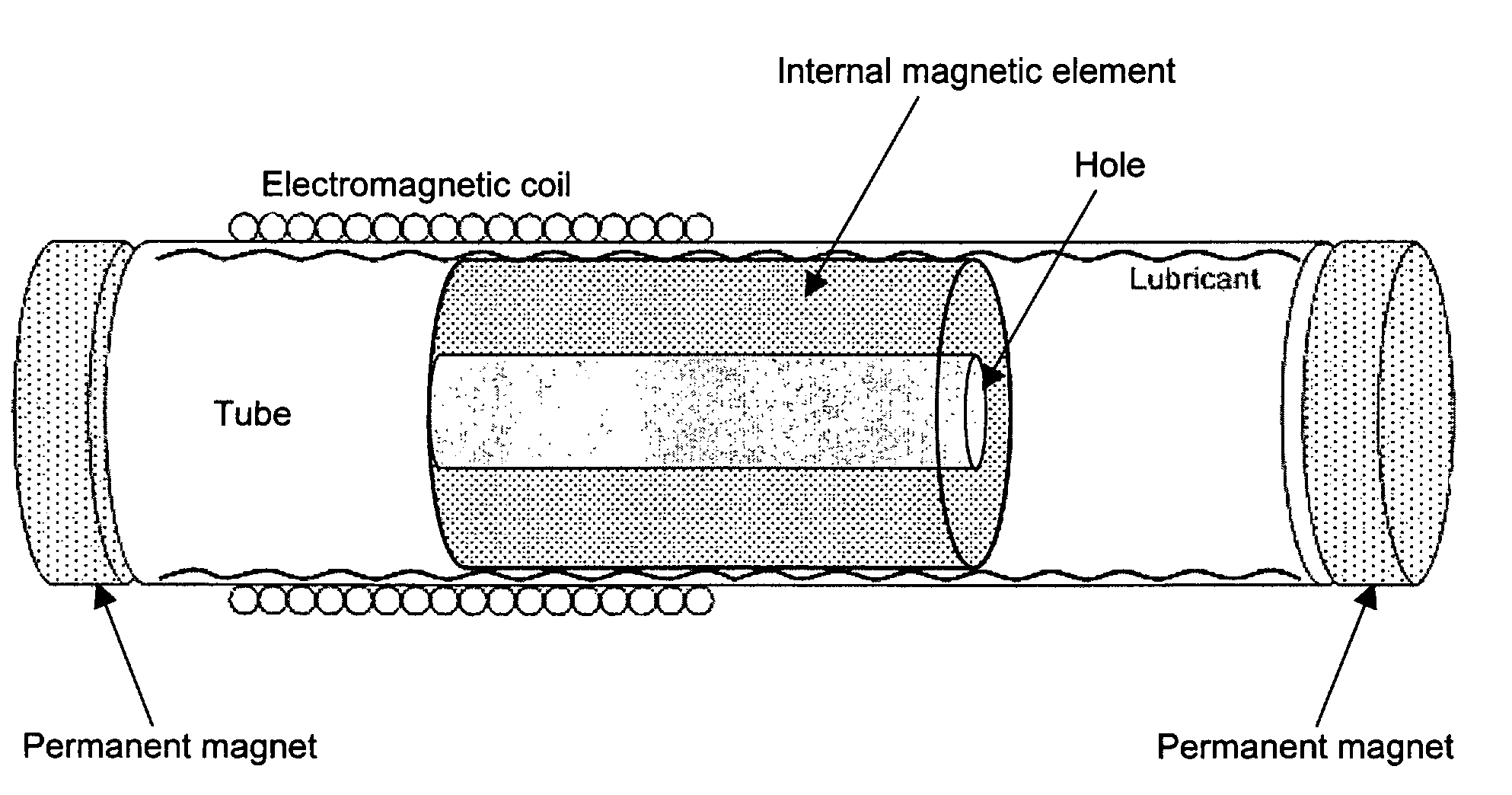Magnetic suspension transducer
a transducer and magnetic suspension technology, applied in the field of acoustic transducers, can solve the problems of fatigue and wear, difficult manufacturing of soft parts, etc., and achieve the effect of reducing the reliance on flexible elements, and good low-frequency respons
- Summary
- Abstract
- Description
- Claims
- Application Information
AI Technical Summary
Benefits of technology
Problems solved by technology
Method used
Image
Examples
Embodiment Construction
[0031]FIG. 1 shows one implementation of the present invention in which a tube supports an internal magnetic element such that it can move freely along the length of the tube. A restoring force is applied to the internal magnetic element by two permanent magnets with their centers at or near the midpoint of the tube, namely a location along the longitudinal axis of the tube that is equidistant from the ends of the tube. Preferably the two permanent magnets are positioned around the tube and oriented so that they apply a net restoring force to the internal magnetic element that is substantially parallel to the long axis of the tube. The restoring force attracts the internal magnetic element toward its nominal rest position, which in this implementation is at or near the point along the length of the tube that is equidistant from the ends of the tube. Preferably the magnetic field axes of the permanent magnets and the internal magnetic element are parallel to the long axis of the tube...
PUM
 Login to View More
Login to View More Abstract
Description
Claims
Application Information
 Login to View More
Login to View More - R&D
- Intellectual Property
- Life Sciences
- Materials
- Tech Scout
- Unparalleled Data Quality
- Higher Quality Content
- 60% Fewer Hallucinations
Browse by: Latest US Patents, China's latest patents, Technical Efficacy Thesaurus, Application Domain, Technology Topic, Popular Technical Reports.
© 2025 PatSnap. All rights reserved.Legal|Privacy policy|Modern Slavery Act Transparency Statement|Sitemap|About US| Contact US: help@patsnap.com



